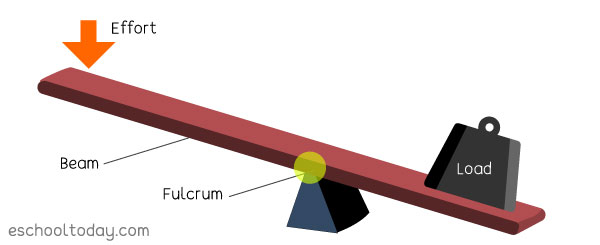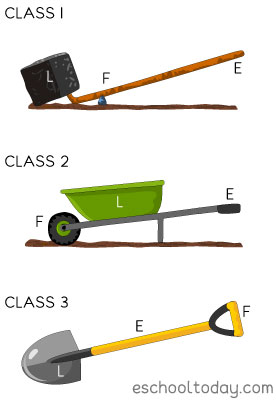- Simple Machines
What is a Lever?
A lever is simply a plank or ridged beam that is free to rotate on a pivot. It is perfect for lifting or moving heavy things. It is a useful simple machine, and you can find them everywhere. Good examples of levers include the seesaw, crowbar, fishing line, oars, wheelbarrows, and the garden shovel.
Parts of a lever
Levers have four important parts — the bar or beam, the fulcrum (the pivot or the turning point), effort (or force), and the load.

The beam is simply a long plank. It may be wood, metal, or any durable material. The beam rests on a fulcrum (a point on the bar creating a pivot).
When you push down one end of a lever, you apply a force (input) to it. The lever pivots on the fulcrum and produces an output (lift a load) by exerting an output force on the load. A lever makes work easier by both increasing your input force and changing the direction of your input force.
The Three Lever Classes

The parts of the lever are not always in the same arrangement. The load (L), fulcrum (F), and effort (E) may be at different places on the plank.
Class One Lever
In this class, the Fulcrum is between the Effort and the Load. The mechanical advantage is more if the Load is closer to the fulcrum. Examples of Class One Levers include seesaws, boat oars, and crowbars.
Class Two Lever
In this class, the Load is between the Effort and the Fulcrum. The mechanical advantage is more if the load is closer to the fulcrum. Examples of Class Two Levers include wheelbarrows. TRY THIS SIMPLE BUT FUN EXPERIMENT!!
Class Three Lever
In this class, the Effort is between the Load and the Fulcrum. The mechanical advantage is more if the effort is closer to the load. An example of a Class Three Lever is a garden shovel.
